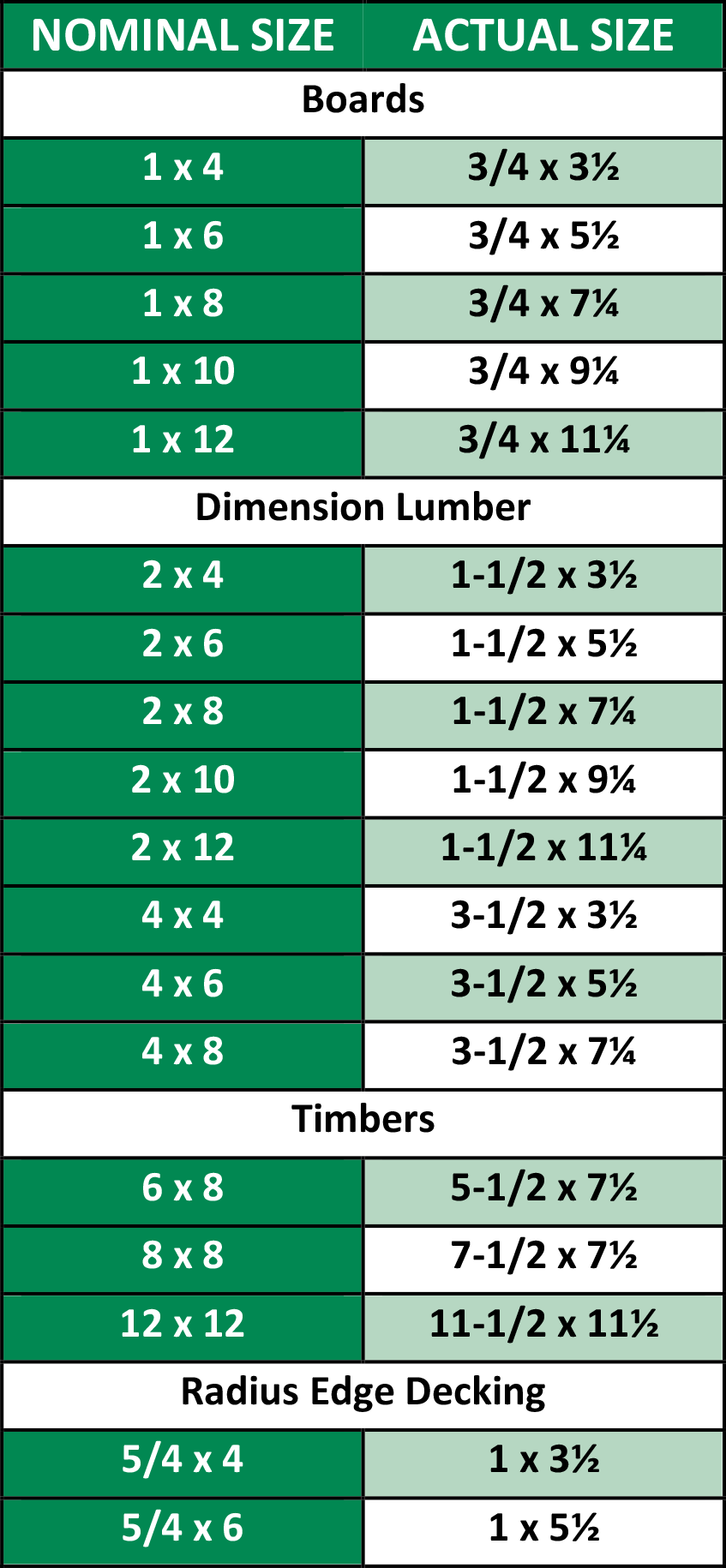Have you ever wondered why a 2×4 doesn’t actually measure exactly 2 inches by 4 inches?
U.S. lumber sizes come in four categories:
- boards (1-inch thick)
- dimension lumber (2-4 inches thick)
- timbers (greater than 5-inches thick), and
- radius edge decking (5/4 inches-thick with curved edges)
The table above shows the difference between actual dimensions and what’s called nominal dimensions.
But why is a 2″x4″, for example, not actually sized 2″x4″?
Lumber mills typically saw logs into the above-mentioned actual dimensions but, as the timber is processed, the width and thickness of the end product is consistently less. Newly-sawn lumber, such as a 2×4, is soaking wet before kiln drying. It then shrinks as it’s dried and is further reduced in size after being planed from “rough” to “surfaced” lumber.
As to lengths, an 8″, 10″, 12″ etc. foot length always measures as stated. Importantly, regardless of the moniker, the end product is consistently the same dimensions as required by U.S. grading rules.
Fun fact: There were no standards on uniform lumber sizes in the U.S. in the 19th Century. Mills produced dimensions at their will, greatly confusing buyers and builders. Congress and the lumber industry settled on standardized sizes beginning in the 1920s, which we now see today.
